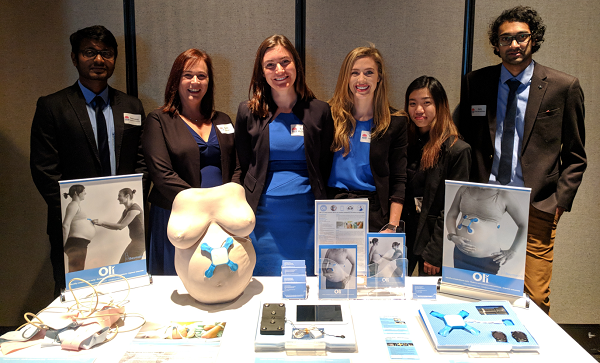Top tips for medtech start-ups
A new, free one-day seminar in the NSW Health Commercialisation Training Program will help entrepreneurs better understand how the health system works.
Let’s say you’re creating an incredible bit of new medical technology –a revolutionary bandage for instance – and you want to make sure it gets onto the shelves of hospitals, GP surgeries and pharmacists. Do you know who to approach? Do all hospitals have the one organisation that buys all their stock, or do you need to approach individual doctors and health professionals?
These are the sorts of questions addressed in a new one-day seminar, called Navigating the Health System, as part of the NSW Health Commercialisation Training Program (CTP). This free program aims to fast-track innovative ideas that will revolutionise the healthcare sector, improve patient outcomes, and provide economic opportunities for emerging medtech and biotech businesses in NSW. Other topics covered in the series of one-day seminars include clinical trials and regulatory affairs.
Presenter of the new seminar, Jane Cockburn who is a commercialisation facilitator and founder of Kairos Now, says understanding how the health system works is critical for medtech start-ups. “Often an entrepreneur will have an idea – such as a widget for a surgical instrument – and it’s just right for our health care system, but when you’re trying to get a product or service within our health care system, you start to understand how complex it is,” she says. “There are a hierarchy of roles in the healthcare system, and it’s a real minefield. If you’ve got a device to get into hospitals, it may need to go to tender, so how do you get on a government tender list?”
Jane encourages entrepreneurs to assess their customers on three levels – the user, chooser and payer. “The chooser might be a surgeon if they have influence or it’s a private practice, or it might come from higher up the tree, or even a procurement department asking questions like, ‘Do I even have shelf space to store these?’”
For example, the company HealthShare NSW buys a range of products and services from IT to hospital gowns in bulk for NSW hospitals. “If you didn’t know that, you wouldn’t get far. I don’t think people realise that you’ve got to know the system early in your product development.”
Jane says she’s looking forward to running the one-day seminar, and sharing her knowledge of key elements and relationships within Australia’s healthcare system and how to navigate it. “If you can understand the complexities here, it will help understand the complexities in other countries.”

A previous participant in the Commercialisation Training Program, Dr Sarah McDonald is bringing a world-changing medical device to market. After a traumatic birth experience in 2013, Dr McDonald realised much of the technology used to monitor women in labour is more than 50 years old. So, she set about creating a non-invasive wireless patch, Oli, named after her second child, that monitors women during labour.
“I came at this as a mother who had had a bad experience. I’ve never set up a medtech company before,” she says. “It’s a steep learning curve. The CTP is a great crash course that sets a solid foundation.”
Dr McDonald says Oli is the only medical technology to identify women at higher risk of developing postpartum haemorrhage well before they give birth. As a result, it recently received Breakthrough Device Designation from the US Food and Drug Administration, which will streamline the commercialisation process in the US.
She says the CTP helped introduce her to the right people and taught her lots of the basics about starting her medtech company, Baymatob. “Even things as simple as pitching – the first pitch I did, I ran off crying, and since then I’ve pitched internationally and to rooms of hundreds of people.”
Obtaining funding was one of the obstacles Dr McDonald faced, with many investors in Australia used to raising smaller amounts. “Getting serious investors on board is really, really hard,” she says.
Dr McDonald, was first funded by Sydney Local Health District through their Pitch Program run by Sydney Research. Baymatob has been supported by Sydney Local Health District since Sarah was PhD researcher at the University of Sydney and much of the research that allowed her to develop Baymatob was undertaken at Royal Prince Alfred Hospital.
Dr McDonald and her team later applied for funding under NSW Health’s Medical Devices Fund, and were successful in 2017 and 2019. Despite the difficulties of raising more than AU$4.7m for Baymatob, Dr McDonald is driven by the knowledge that what she is doing is really important; knowing a woman dies of postpartum haemorrhage every seven minutes, making it the world’s leading cause of preventable maternal deaths. “I’ve got to give it everything I possibly can,” she says.
For more information on the NSW Health Commercialisation Training Program, go to https://www.medicalresearch.nsw.gov.au/commercialisation-training/.
Updated 3 years ago